What is ProcessorCactus
According to security professionals, ProcessorCactus is a an Adware application that targets Apple computers. Adware is form of malicious software which displays unwanted ads on a MAC, redirects search results to scam webpages and collects personal info for marketing purposes. ProcessorCactus can display banner ads, full-screen ads, pop-ups, videos, or other varieties of online advertising. It can attack MAC system’s internet browsers such as Mozilla Firefox, Google Chrome and Safari. Maybe you approve the idea that the ads or pop ups is just a small problem. But these unwanted advertisements eat system resources and slow down your MAC performance.

Unwanted ads
Even worse, the adware be able to gather a wide variety of marketing-type data about you (your ip address, what is a web-page you are viewing now, what you are looking for on the Internet, which links you are clicking), which can later transfer to third parties.
How does ProcessorCactus get on your machine
Adware software usually is bundled within free applications that downloaded from the Internet. Which means that you need to be proactive and carefully read the Terms of use and the License agreement properly. For the most part, adware software and PUPs will be clearly described, so take the time to carefully read all the information about the software that you downloaded and want to install on your MAC system.
Threat Summary
| Name | ProcessorCactus |
| Type | adware, potentially unwanted program (PUP), Mac malware, Mac virus |
| Detection Names | Adware.MAC.Generic, Adware/Adload!OSX, Osx.Adware.Cimpli, OSX.Trojan.Gen, ApplicUnwnt, MacOS.Agent-MT, Program:MacOS/Vigram.A and Trojan-Downloader.OSX.Adload |
| Distribution | Freeware installers, torrent downloads, suspicious pop up ads and fake update tools |
| Symptoms | You keep getting redirected to unfamiliar websites, ads appear in places they shouldn’t be, your MAC starts automatically installing unexpected software, unexpected internet browser extensions or toolbars keep coming back, unexpected changes in your browser like displaying new tabs you did not open, speed test good but internet slow. |
| Removal | ProcessorCactus removal guide |
How to remove ProcessorCactus adware
As with removing adware, malicious software or potentially unwanted software, there are few steps you can do. We recommend trying them all. If you do only one part of the guidance, then it should be use malware removal tool, because it should remove adware software and stop any further infection. But to completely get rid of ProcessorCactus you will have to at least reset your web-browser settings such as start page, new tab and search provider to default state, uninstall all unwanted and suspicious software, and scan your Mac with malicious software removal tools. Read it once, after doing so, please bookmark this page (or open it on your smartphone) as you may need to exit your browser or reboot your MAC system.
To remove ProcessorCactus, use the steps below:
- Remove profiles created by ProcessorCactus
- Uninstall ProcessorCactus related apps through the Finder
- Remove ProcessorCactus related files and folders
- Scan your Mac with MalwareBytes
- Remove ProcessorCactus from Safari, Chrome, Firefox
- How to stay safe online
Remove profiles created by ProcessorCactus
ProcessorCactus can install a configuration profile on the Mac system to block changes made to the browser settings. Therefore, you need to open system preferences, find and delete the profile installed by the adware software.
Click Apple menu ( ![]() ) > System Preferences.
) > System Preferences.
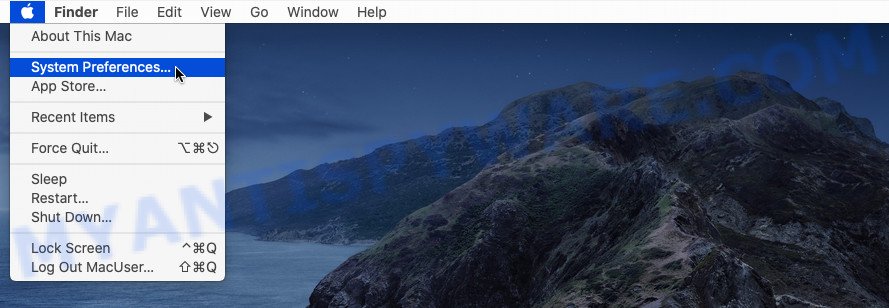
In System Preferences, select Profiles. if there is no Profiles in the list of preferences, that means there are no profiles installed on the Mac computer. If there is Profiles in the list, then click on it, then select a profile associated with ProcessorCactus.
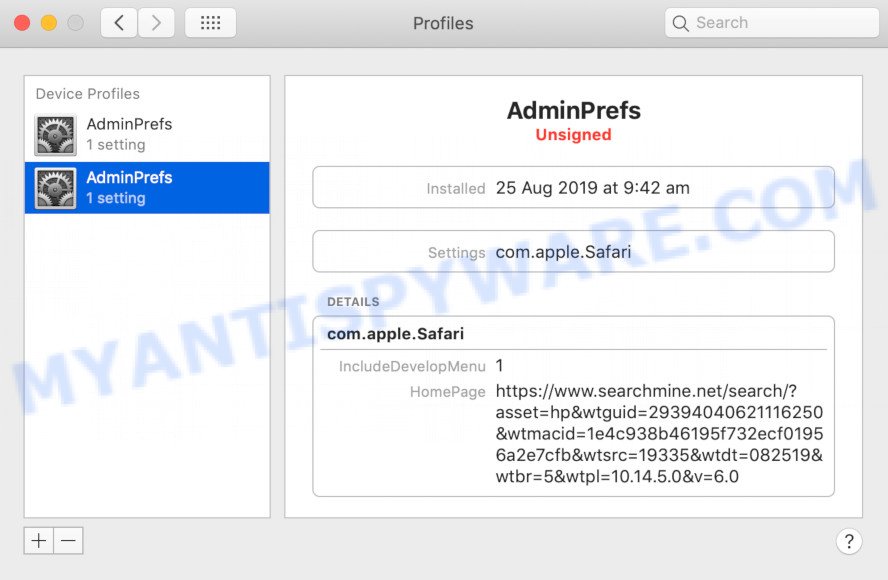
To delete a malicious profile, click on the minus button ( – ) located at the bottom-left of the Profiles screen.
Uninstall ProcessorCactus related apps through the Finder
Check the list of installed software on your Apple computer and delete all unknown and recently installed programs. If you see an unknown program with incorrect spelling or varying capital letters, it have most likely been installed by malware and you should clean it off first with malware removal utility such as MalwareBytes.
Open Finder and click “Applications”.
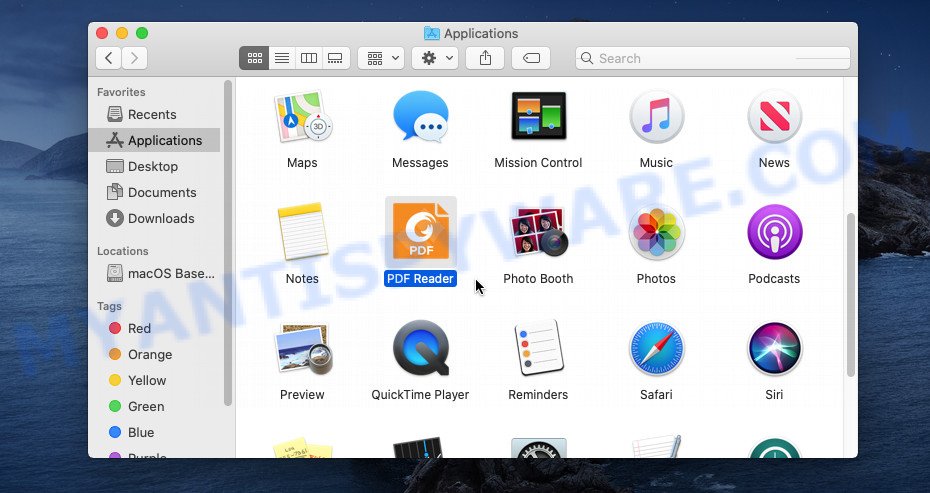
It will display a list of all apps installed on your MAC. Scroll through the all list, and delete any questionable and unknown software. Right click to suspicious program and select “Move to Trash”. Another method is drag the program from the Applications folder to the Trash.
Most important, scroll through the all list, and move to trash any unknown applications. Don’t forget, choose Finder -> Empty Trash.
Remove ProcessorCactus related files and folders
Now you need to try to find ProcessorCactus related files and folders, and then delete them manually. You need to look for these files in certain directories. To quickly open them, we recommend using the “Go to Folder…” command.
ProcessorCactus creates several files, these files must be found and removed. Below is a list of files associated with this unwanted application.
- /Library/LaunchDaemons/com.ProcessorCactus.system.plist
- ~/Library/LaunchAgents/com.ProcessorCactus.service.plist
- /Library/Application Support/.(RANDOM)/System/com.ProcessorCactus.system
- ~/Library/Application Support/.(RANDOM)/Services/com.ProcessorCactus.service.app
Some files created by ProcessorCactus are hidden from the user. To find and delete them, you need to enable “show hidden files”. To do this, use the shortcut CMD + SHIFT + . Press once to show hidden files and again to hide them. There is another way. Click Finder -> Applications -> Utilities -> Terminal. In Terminal, paste the following text: defaults write com.apple.finder AppleShowAllFiles YES

Press Enter. Hold the ‘Option/alt’ key, then right click on the Finder icon in the dock and click Relaunch.
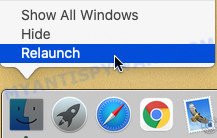
Click on the Finder icon. From the menu bar, select Go and click “Go to Folder…”. As a result, a small window opens that allows you to quickly open a specific directory.

Check for ProcessorCactus generated files in the /Library/LaunchAgents folder

In the “Go to Folder…” window, type the following text and press Go:
/Library/LaunchAgents
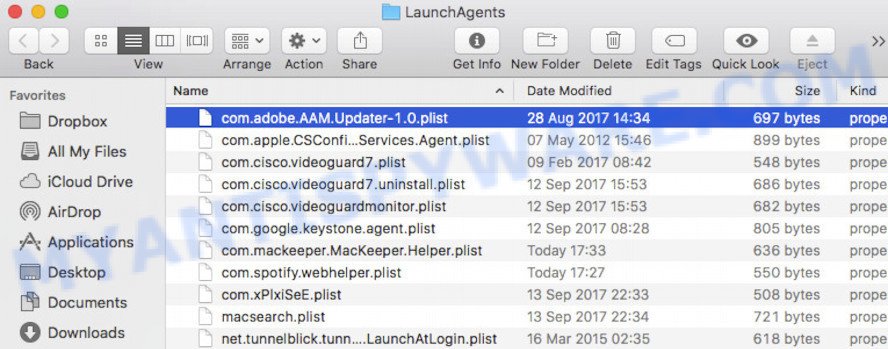
This will open the contents of the “/Library/LaunchAgents” folder. Look carefully at it and pay special attention to recently created files, as well as files that have a suspicious name. Move all suspicious files to the Trash. A few examples of files: com.net-preferences.plist, com.machelper.plist, installapp.plist, macsearch.plist, com.google.defaultsearch.plist, , search.plist and com.ProcessorCactus.service.plist. Most often, browser hijackers, potentially unwanted programs and adware create several files with similar names.
Check for ProcessorCactus generated files in the /Library/Application Support folder

In the “Go to Folder…” window, type the following text and press Go:
/Library/Application Support
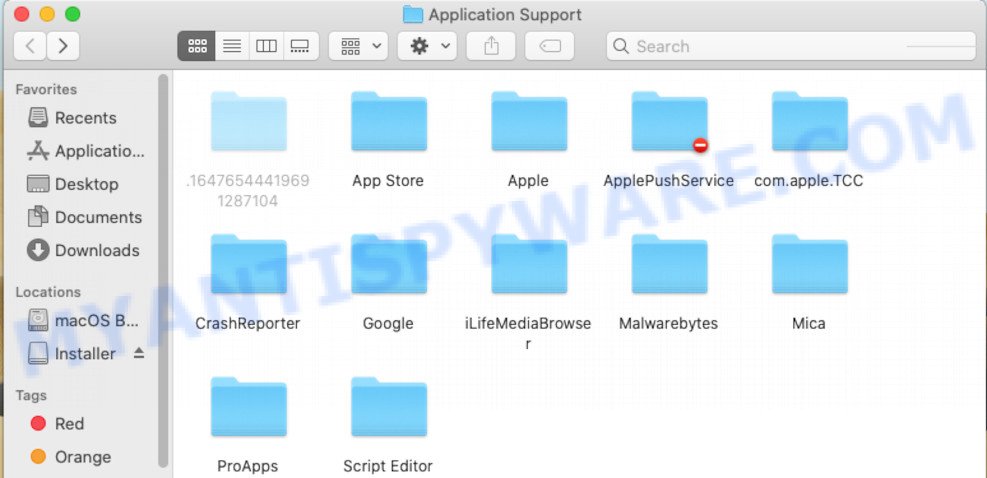
This will open the contents of the “Application Support” folder. Look carefully at its contents, pay special attention to recently added/changed folders and files. Check the contents of suspicious folders, if there is a file with a name similar to com.ProcessorCactus.system, then this folder must be deleted. Move all suspicious folders and files to the Trash.
Check for ProcessorCactus generated files in the “~/Library/LaunchAgents” folder

In the “Go to Folder…” window, type the following text and press Go:
~/Library/LaunchAgents

Proceed in the same way as with the “/Library/LaunchAgents” and “/Library/Application Support” folders. Look for suspicious and recently added files. Move all suspicious files to the Trash.
Check for ProcessorCactus generated files in the /Library/LaunchDaemons folder
In the “Go to Folder…” window, type the following text and press Go:
/Library/LaunchDaemons

Carefully browse the entire list of files and pay special attention to recently created files, as well as files that have a suspicious name. Move all suspicious files to the Trash. A few examples of files to be deleted: com.installapp.system.plist, com.macsearch.system.plist, com.search.system.plist, com.ProcessorCactus.system.plist and com.machelper.system.plist. In most cases, potentially unwanted programs, browser hijackers and adware software create several files with similar names.
Scan your Mac with MalwareBytes
Manual ProcessorCactus removal requires some computer skills. Some files and system entries that created by the adware software can be not fully removed. We suggest that use MalwareBytes to scan the Mac. Moreover, this application will help you to remove adware software, browser hijackers, toolbars and potentially unwanted programs that your MAC can be affected too.
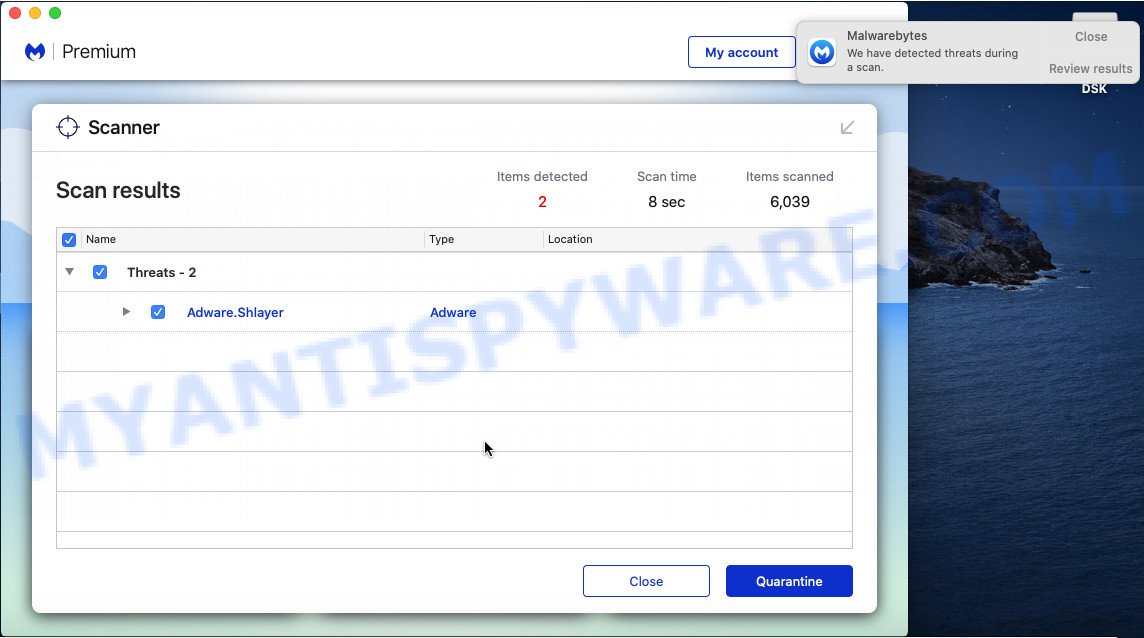
- MalwareBytes Anti-Malware can be downloaded from the following link.
Malwarebytes Anti-malware (Mac)
21017 downloads
Author: Malwarebytes
Category: Security tools
Update: September 10, 2020
- After the download is finished, please close all programs and open windows on your Apple Mac. Run the downloaded file. Follow the prompts.
- The MalwareBytes AntiMalware will start and display the main window.
- Further, click the “Scan” button to perform a system scan with this tool for the ProcessorCactus adware software. A system scan can take anywhere from 5 to 30 minutes, depending on your Apple Mac. While the MalwareBytes Anti-Malware utility is scanning, you can see count of objects it has identified as being affected by malware.
- After the scan get completed, you can check all items found on your MAC system.
- Review the scan results and then press the “Remove Selected Items” button.
- Close the Anti-Malware and continue with the next step.
Remove ProcessorCactus from Safari, Chrome, Firefox
This step will show you how to remove malicious extensions. This can remove ProcessorCactus adware and fix some browsing issues, especially after adware software infection.
You can also try to remove ProcessorCactus by reset Google Chrome settings. |
If you are still experiencing issues with ProcessorCactus adware removal, you need to reset Firefox browser. |
|
How to stay safe online
One of the worst things is the fact that you cannot stop all malicious web-sites using only built-in Microsoft Windows capabilities. However, there is a application out that you can use to stop unwanted browser redirects, advertisements and pop ups in any modern browsers including Firefox, Safari and Google Chrome. It is called Adguard and it works very well.
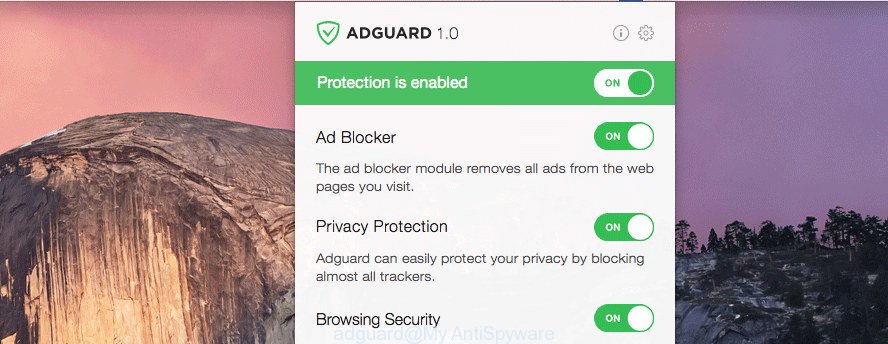
- Installing the AdGuard is simple. First you’ll need to download AdGuard by clicking on the following link. Save it to your Desktop.
AdGuard for Mac download
3779 downloads
Author: © Adguard
Category: Security tools
Update: January 17, 2018
- Once downloading is complete, run the downloaded file. You will see the “Setup Wizard” program window. Follow the prompts.
- After the install is finished, click “Skip” to close the installation program and use the default settings, or click “Get Started” to see an quick tutorial which will assist you get to know AdGuard better.
- In most cases, the default settings are enough and you do not need to change anything. Each time, when you launch your machine, AdGuard will run automatically and stop annoying advertisements, block malicious and misleading webpages.
To sum up
Once you have removed the ProcessorCactus adware using the guidance, Firefox, Google Chrome and Safari will no longer display any annoying ads when you surf the Internet. Unfortunately, if the steps does not help you, then you have caught a new adware, and then the best way – ask for help.
Please create a new question by using the “Ask Question” button in the Questions and Answers. Try to give us some details about your problems, so we can try to help you more accurately. Wait for one of our trained “Security Team” or Site Administrator to provide you with knowledgeable assistance tailored to your problem with the ProcessorCactus adware.



















